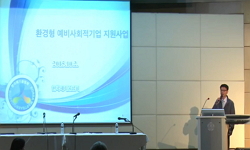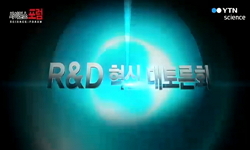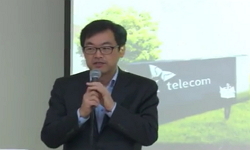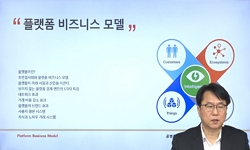기술의 동적인 측면을 나타내는 기술혁신은 기업이 경쟁에서 우위를 차지하는데 중요한 역할을 한다. 기업은 혁신적인 방법을 발견하여 이를 시장에 적용하며 경쟁우위를 차지 하는데, 이...
http://chineseinput.net/에서 pinyin(병음)방식으로 중국어를 변환할 수 있습니다.
변환된 중국어를 복사하여 사용하시면 됩니다.
- 中文 을 입력하시려면 zhongwen을 입력하시고 space를누르시면됩니다.
- 北京 을 입력하시려면 beijing을 입력하시고 space를 누르시면 됩니다.
고기술 제조업과 저기술 제조업의 기술혁신 결정요인에 관한 연구 = A Study on Determinants of Innovative Activity of High-tech and Low-tech Manufacturing Industries
한글로보기부가정보
국문 초록 (Abstract)
기술의 동적인 측면을 나타내는 기술혁신은 기업이 경쟁에서 우위를 차지하는데 중요한 역할을 한다. 기업은 혁신적인 방법을 발견하여 이를 시장에 적용하며 경쟁우위를 차지 하는데, 이러한 과정이 곧 기술혁신이다.
본 연구의 목적은 제조업 산업별로 고유한 기술혁신의 패턴이 존재하는지 실증하는 것이다. 이러한 목적을 달성하기 위하여 국내 제조업을 연구개발집약도에 따라서 고기술산업과 저기술산업으로 분류하고, 과학기술정책연구원에서 실시한 「2012년도 기술혁신조사」데이터를 이용하여 로지스틱 분석(Logistic regression)을 실시하였다. 연구개발활동 유무를 종속변수로 설정하고, 혁신 유형, 기업 특성, 연구개발활동, 주력 시장, 기술적 기회, 전유 체제, 수요 구조, 정부 지원제도, 산업 유형 등을 독립변수로 활용하였으며 분석결과는 다음과 같다. 첫 번째, 제조업을 저기술산업과 고기술산업으로 분류하기 위해 설정한 변수가 유의한 영향을 미치는 것으로 나타나 산업별 기술혁신 패턴에 차이가 있다는 것을 발견하였다. 두 번째, 전 산업에서 공정혁신보다는 공식적 연구개발을 통한 제품혁신에 주력하고 있었으며, 수출에 주력하는 기업일수록 활발히 기술혁신을 수행하고 있었다. 세 번째, 기술 패러다임에 의해 규정되는 기술혁신 결정요인인 기술적 기회와 전유 체제 그리고 유인 메커니즘에 의해 규정되는 수요 구조가 기술혁신에 미치는 영향이 산업별로 차이가 있었다. 네 번째, 전 산업에서 기업의 규모가 작을수록 기술혁신에 부정적인 영향을 미치는 것으로 나타났다. 마지막으로 정부 지원제도가 기술혁신에 미치는 영향이 산업별로 차이가 있었다.
다국어 초록 (Multilingual Abstract)
The innovations to represent the dynamic aspects of technology play an important role to dominate in the competitive companies. Companies take up competitive advantage by finding innovative way to apply it to the market, and this process is the exact...
The innovations to represent the dynamic aspects of technology play an important role to dominate in the competitive companies. Companies take up competitive advantage by finding innovative way to apply it to the
market, and this process is the exactly technological innovation.
The purpose of this study is to demonstrate that whether are a unique pattern of the innovation in manufacturing industry. In order to achieve these objectives, domestic manufacturing business were classified as high-technology industries and low technology industries according to R & D intensity, and the Logistic Regression was performed by using the data of "Korean Innovation Survey 2012" which is conducted by the Science and Technology Policy Institute. The presence or not of research and development activities had been set as the dependent variable, and innovation types, corporate characteristics, research and development activities, main market and technological opportunities, appropriability regime, demand structure, government support programs and industry type had been used as an independent variable, and the analysis results are as follows.
The variable which was set to classify as low-tech industries and high-tech industries in the manufacturing business had significant influence so that this study found that the patterns of industry innovation are different. Second, all industries were more focused on product innovation rather than process innovation through formal research and development, and the companies the more focus on exports was carried out actively technical innovation activities.
Third, there was industrial difference in impact of domestic structure which is determined by inducing mechanism on the technical innovation according to technological opportunities and the appropriability regime as
the determinants of technological Innovation.
Fourth, the smaller the sizes of company in the all industries lead to a negative effect of the technical innovation. Finally, the impact of government support system on the technical innovation was different to each industry.
목차 (Table of Contents)
- 제1장 서 론 1
- 제1절 연구 배경 1
- 제2절 연구 목적 2
- 제3절 연구 내용 5
- 제2장 이론적 배경 7
- 제1장 서 론 1
- 제1절 연구 배경 1
- 제2절 연구 목적 2
- 제3절 연구 내용 5
- 제2장 이론적 배경 7
- 제1절 기술혁신의 의의 7
- 1. 기술혁신의 개념 7
- 2. 기술혁신의 유형 8
- 가. 제품혁신과 공정혁신 8
- 나. 급진적 혁신과 점진적 혁신 10
- 다. 파괴적 혁신과 비파괴적 혁신 11
- 제2절 산업별 기술혁신 패턴의 의의 12
- 1. 산업별 기술혁신 패턴의 개념 12
- 2. 기술혁신 결정 요인 13
- 가. 기술 패러다임(technological paradigm) 14
- 나. 유인 메커니즘(inducing mechanism) 14
- 3. 산업별 기술혁신 결정 요인 15
- 가. 기술적 기회(technological opportunity) 15
- 나. 전유 체제(appropriability regime) 16
- 다. 수요(demand) 구조 17
- 4. 기술혁신 주체 17
- 5. 제조업 산업별 특징 18
- 가. 고기술산업 18
- 나. 중·저기술산업 20
- 제3절 연구개발활동의 의의 22
- 1. 연구개발활동의 정의 22
- 2. 연구개발활동의 유형 23
- 가. 연구개발 단계에 따른 정의 23
- 나. 공식적 연구개발활동(formal R&D) 25
- 다. 비공식적 연구개발활동(informal R&D) 27
- 3. 연구개발에서 제외되는 활동 29
- 제4절 선행연구 및 가설도출 30
- 1. 산업별 기술혁신 패턴 30
- 2. 연구개발활동 33
- 제3장 실증 분석 37
- 제1절 통계 자료 37
- 제2절 연구 모델 37
- 1. 연구 모형 38
- 가. 로지스틱 회귀분석(logistic regression) 개요 38
- 나. 요인 분석 40
- 2. 연구개발집약도에 따른 제조업 분류 41
- 3. 변수 설정 42
- 가. 종속 변수 43
- 나. 독립 변수 43
- (1) 기업 특성 변수 44
- (2) 주력 시장 44
- (3) 산업 유형 변수 44
- (4) 연구개발활동 44
- (5) 요인분석 및 사전 검정결과 44
- (6) 요인분석 결과 45
- 제3절 기초 통계 47
- 1. 제조업 업종과 기업 특성 47
- 2. 기업 특성 49
- 가. 기업 유형별 특성 49
- 나. 기업 유형별 혁신 활동 49
- 3. 종속 변수와 독립변수의 기초 통계량 50
- 제4절 실증분석 결과 54
- 1. 산업별 기술혁신 결정요인 분석 결과 54
- 가. 기술혁신 54
- 나. 연구개발활동 55
- 다. 혁신 주체 55
- 라. 기술적 기회 56
- 마. 전유 체제 57
- 바. 수요 구조 58
- 사. 정부 지원제도 59
- 2. 실증분석 결과 요약 64
- 제4장 결론 70
- 제1절 결론 70
- 1. 연구 결과 요약 70
- 2. 연구의 의의 72
- 3. 시사점 73
- 제2절 연구의 한계점 74
- 참고문헌 75
- 부록 83
- ABSTRACT 92












